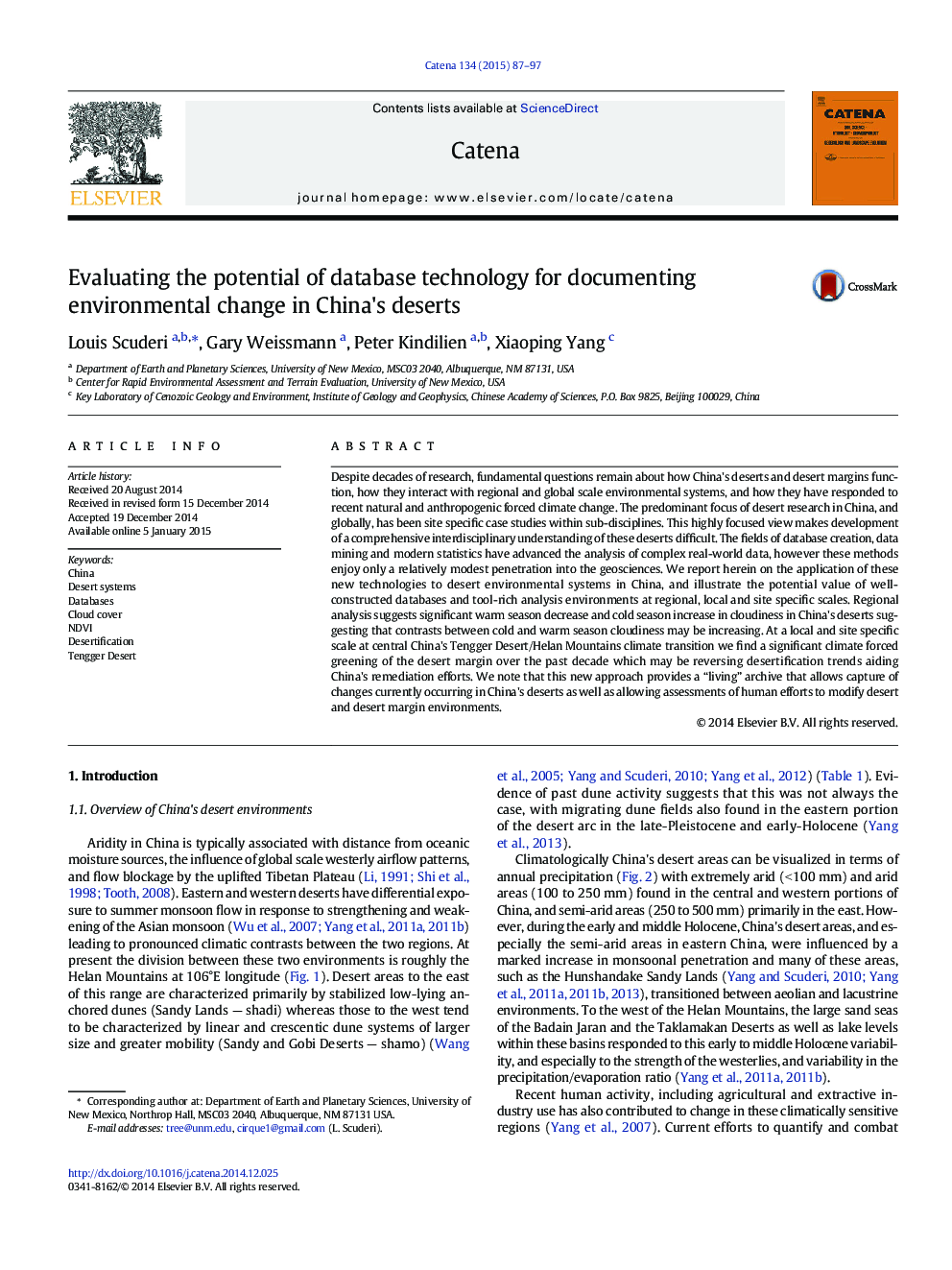| کد مقاله | کد نشریه | سال انتشار | مقاله انگلیسی | نسخه تمام متن |
|---|---|---|---|---|
| 4570976 | 1629218 | 2015 | 11 صفحه PDF | دانلود رایگان |
• We examine issues involved in creating large regional scale databases.
• We utilize a database of Chinese deserts to assess environmental change.
• Database approaches reveal large-scale spatial and temporal patterns.
• Decreases have occurred in desert warm season cloudiness since 2000.
• Changing moisture availability may be reversing desertification in central China.
Despite decades of research, fundamental questions remain about how China's deserts and desert margins function, how they interact with regional and global scale environmental systems, and how they have responded to recent natural and anthropogenic forced climate change. The predominant focus of desert research in China, and globally, has been site specific case studies within sub-disciplines. This highly focused view makes development of a comprehensive interdisciplinary understanding of these deserts difficult. The fields of database creation, data mining and modern statistics have advanced the analysis of complex real-world data, however these methods enjoy only a relatively modest penetration into the geosciences. We report herein on the application of these new technologies to desert environmental systems in China, and illustrate the potential value of well-constructed databases and tool-rich analysis environments at regional, local and site specific scales. Regional analysis suggests significant warm season decrease and cold season increase in cloudiness in China's deserts suggesting that contrasts between cold and warm season cloudiness may be increasing. At a local and site specific scale at central China's Tengger Desert/Helan Mountains climate transition we find a significant climate forced greening of the desert margin over the past decade which may be reversing desertification trends aiding China's remediation efforts. We note that this new approach provides a “living” archive that allows capture of changes currently occurring in China's deserts as well as allowing assessments of human efforts to modify desert and desert margin environments.
Journal: CATENA - Volume 134, November 2015, Pages 87–97
